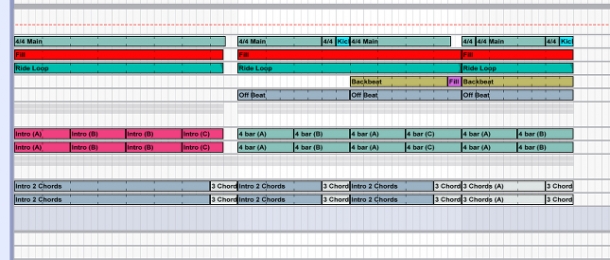
One of the biggest challenges we come across as music producers is the seemingly monumental task of fleshing out a single musical idea into a full-blown track.
These days, it's easy enough to get a decent loop going inside your DAW but if you're anything like me, you'll have developed a nasty habit of endlessly repeating short 4 bar sections and tinkering with minute details, fantasising about what the track could be if only you could work out the magic ingredient!
The fact is, it's not terribly difficult to get a loop to sound good in isolation - indeed, some of my favourite tracks are nothing much more than a single, repeating figure.
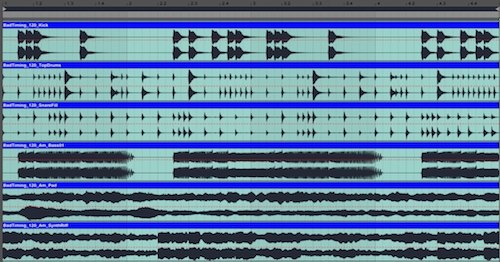
This approach is incredibly limited in scope however and more often that not, you're going to need a bit of variety to structure the track and help build and release tension throughout your tune.
If you've got a great loop going and are looking for tips on how to start developing an arrangement, then this is the article for you - I hope to provide you with a few techniques you can try out to extend the life of your loops beyond their initial 4 or 8 bars. Let's dive in!
Moving Beyond The Infinite Loop
Before we begin, I just wanted to say that all the below ideas are applicable no matter which DAW you use but I'm going to be using Ableton Live here for the sake of demonstration.
So to get things started, here's a loop that I've created using some of the instrument presets from our House Generator - Ableton Live Racks pack:
We can hear straight away that this is basically just a 2-bar loop that will get pretty tiring after a few repetitions. Here's the original melodic line that you can hear in the bass and synth parts:
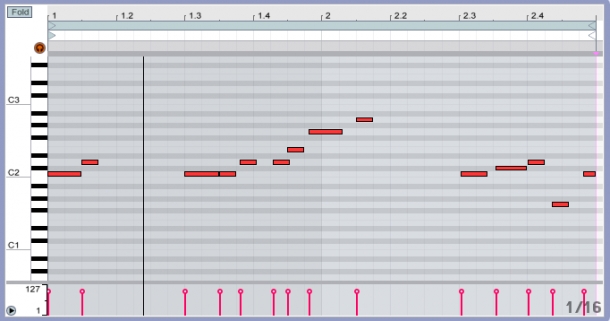
Let's start by extending the length of the melody from 2 to 4 bars. In the screenshot below, you can see that I've repeated the melody and made a slight variation to the last part of the repeated section.
Using notes already involved in the lick, we've managed to alter the rhythm just a tad whilst keeping things relevant to what has come before - this is a great way to create subtle variation in your track without much effort at all:
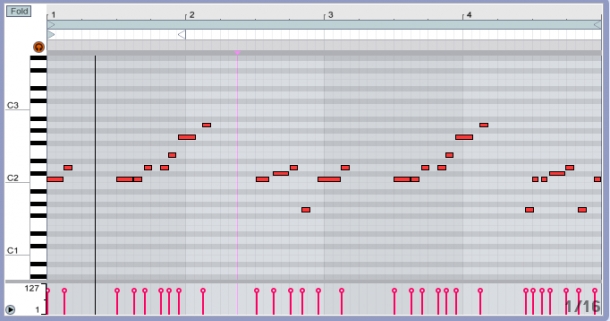
Let's make another very slight rhythmic alteration to the last lick:
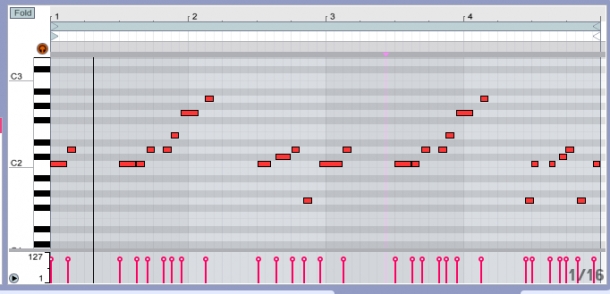
Notice the difference' It might take a few listens to get it but it contains another very subtle change that will help to create more interest for the listener as the track progresses.
Now let's get a little bit more complex - let's create a variation of the idea that messes with the melodic line itself:
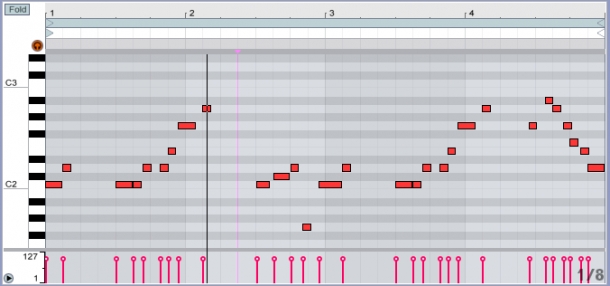
So in the example above, you can see in the screenshot and hear in the audio that we've added a descending lick to the melody at the end of the 4 bar phrase. This is nice as it compliments the rising line that precedes it and resolves nicely back onto the root note when the pattern repeats again.
Be mindful of which notes you choose and make sure that they fit well with the other musical elements in your track when applying this technique.
Same Trick, New Dog
Turning our attention to the keys and pad part now, we can see that we're using 3 chords in this example - Fmaj13, Em7 and F#m7 - with a fairly simple rhythm applied:
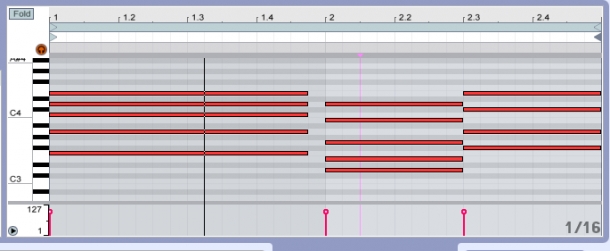
We'll keep this as a 2 bar phrase but create a variation in the same way we did earlier on with the melody - adding some rhythmic variation to what we already have:
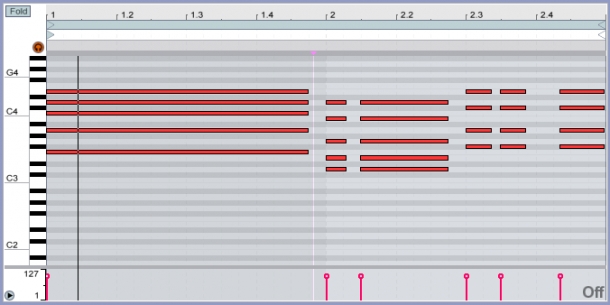
Naked Arrangement
Another way we can develop our shorter ideas into fuller sections is to strip back the parts, or simplify them in some way. This will then allow us to build things back up towards the original idea throughout the track, by gradually adding in the parts we took out.
This is a technique that has a classic use in the intro of tracks - sticking with the keys and pad part, let's strip out the Em7 chord for now:

We'll use this reduced loop to help build the track. Going back to the melodic line now, we've created some more variations by simply removing what we already had to varying degrees:
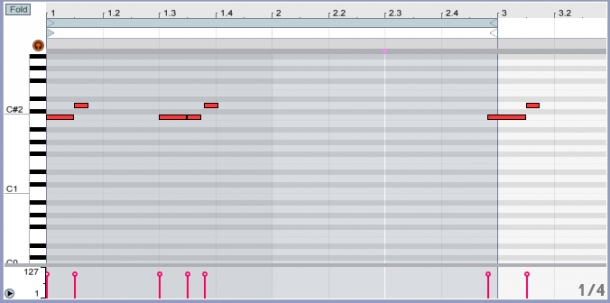
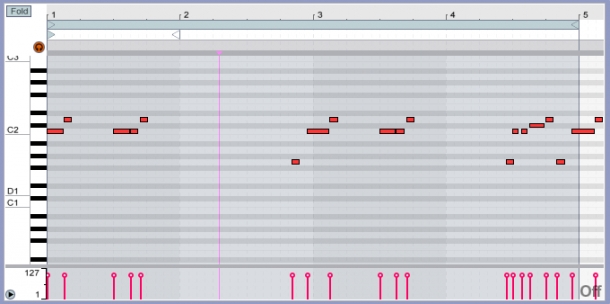
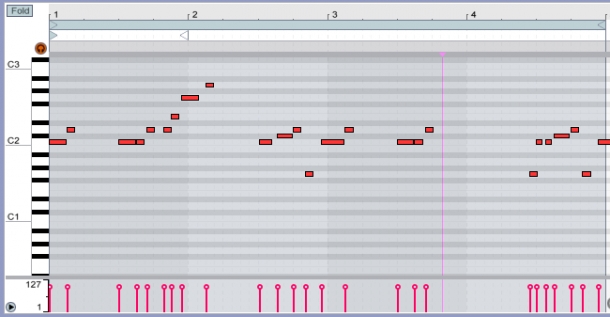
Note that I've used colour-coding and tried to apply some sort of naming convention in order to make things clearer and easier to work with as I continue work on my track:

With just a little playing around, we've already got a nice little intro going! I've stripped the drum section back from the original loop, cutting out the clap and open hi hats and used a combination of the different 'Intro' clips created from the original melody line, as well as using the simplified 'Intro 2 Chords' clip for the keys and pad part.
Let's add some of the other clips in now to continue to build the track up:
Now our track is starting to really get somewhere! As you can hear, I've gradually included more of the melodic variations as the track progresses. Alongside this, I've started to add the '3 chord' pattern - introducing it every so often as a kind of melodic 'fill', more commonly associated with drum patterns.
I've also started to add slight variations inside the drum parts too - dropping some instruments in and out and creating brief, 1 bar fills on the kick and clap sound to flesh things out and create some compositional movement. Here's the arrangement view so you can see how things are taking shape:
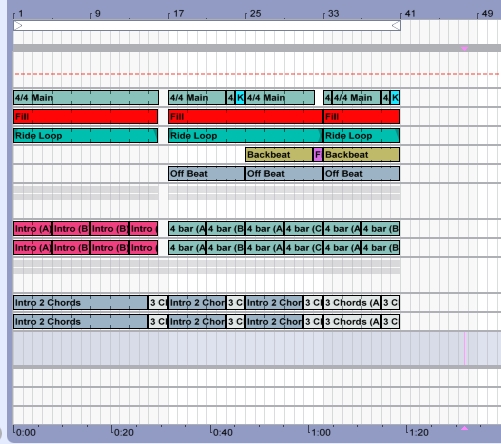
I feel my track is really cooking now and I could go on and finish it up in this session alone but now it's your turn to try! Revisit that killer loop you created weeks ago and try to use some of the above ideas to develop a fuller arrangement.
Try to resist the urge to add more and more elements, instruments and ideas, instead working with what you already have and you may just be surprised with what you come up with - get creative!













